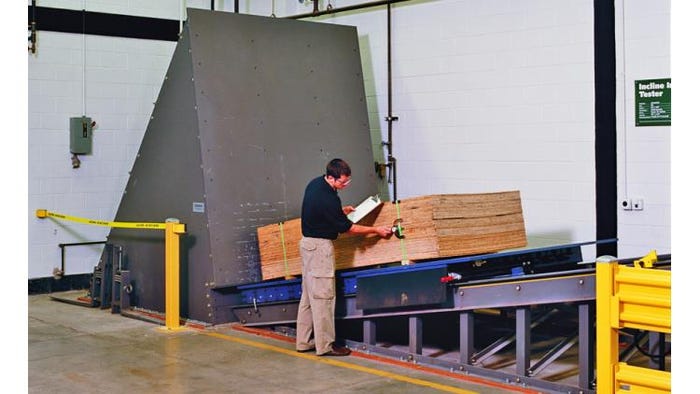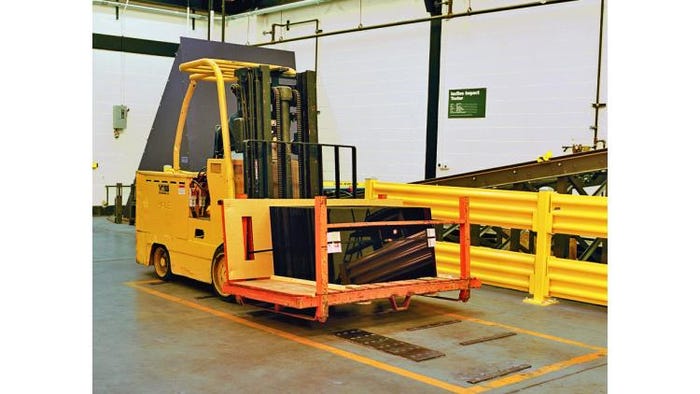How to reduce risk and optimize shipping performance with packaging lab testing
March 29, 2016

The way we transport products from point A to point B has changed dramatically over the years. We’ve gone from domestic railcar and trucks to worldwide air and sea shipping. While this evolution has been critical to our global economy, each stage has presented new challenges for safely securing products in transit.
Since 1948, the International Safe Transit Assn. (ISTA) has led the industry in developing test protocols to ensure products survive the risky and hazardous global distribution market. Whether by land, air or sea, these tests allow manufacturers to predict and adjust their load containment practices to “manage risk while optimizing the supply chain.”
Since “One good test is worth a thousand expert opinions!” we’ve broken down the testing process and procedures available to help manufacturers make informed decisions for current and future packaging practices.
Benefits and timeline
As the quote above alludes, testing palletized units can save considerable time and money. Today’s laboratory testing procedures allow manufacturers to replicate real-life scenarios in a shorter timeframe. For example, a cross-country journey on a truck can be replicated in a few hours on a random vibration table (explained further below).
In addition, further savings can be added to the bottom line. Testing eliminates fuel, personnel and equipment needed to perform the actual journey and proactively isolates and helps solve perceived challenges.
Understanding these benefits is the first step to greater unit containment. So when is the right time to put your packaging method to the test? The simple answer is anytime: after product damage, during package redesigns, to meet customer demands, prior to product launch or to proactively test your packaging design. Ideally it’s best to test as early as possible and it’s recommended to do so during the packaging design phase.
There are a number of ways to approach testing. Three distinct approaches and services are:
1. Customer Application Review: Conducted onsite, an evaluation of current packaging methods followed by a comprehensive report of analyses and recommendations. Whether looking to upgrade a packaging system with new products or looking to identify further savings, this one to three day review can help.
2. Field Engineering: Services are performed onsite. It can include developing a new package or providing support through an existing project. The package can also be followed through the entire supply chain environment.
3. Packaging Laboratory Testing: Products are tested in a controlled environment on various ISTA-certified equipment to ensure the packaging solution can withstand various harsh handling and shipping conditions.
Of the services listed, the most common is the laboratory testing because it is effective and efficient. It also helps prove that recommended unit containment solutions will work in the real-world. For more complex or early-stage products, field testing is highly recommended. According to our laboratory packaging engineers, on average 40 hours of engineering work is required to properly test a unit. Timelines can vary based on the product conditions and testing parameters.
Testing solutions
So what tests are available? From vibration tables to environmental chambers, there are a number of solutions available to ensure products arrive in their intended condition.
One of the most popular tests is the Random Vibration Simulation machine (see photo above), which reproduces vertical vibration that packaged products experience during shipping and handling.
As mentioned earlier, the random vibration equipment can simulate long-distance travel at a fraction of the time and cost without risk. For example, a 30-day railcar trip can be simulated on the random vibration table in just several hours. The key element to the machines’ success is a portable shock and vibration recorder equipped with a time and date stamp. The recorder collects transportation-specific data that can be replicated later on the random vibration table. In conjunction with a separate GPS (global positioning system), the exact location of product impact, shock or vibration can also be determined. For products transported via ship or railcar, a Rotary Motion Vibration machine is best used to simulate its unique transportation conditions.
There are also shocks and impacts that typically occur during truck shipments and railcar coupling. An Incline Impact Machine (see photo below) can simulate railcar coupling and truck shocks for packaged products.

Before a palletized unit is placed on a truck or railcar it’s most likely being transported throughout the warehouse and storage yard via forklift trucks or other equipment. A Rough Handling Test (see photo below) can be used to recreate shock and vibration during handling.

In other instances, testing the environmental conditions of the product throughout the supply chain is most critical. This is especially true for refrigerated and frozen foods, produce and dairy applications. Whether the requirement is to test hot or cold temperatures, a Conditioning Chamber (see environmental chamber photo below) can duplicate conditions from -20-deg F. through +100-deg F.

When looking to test how unitized products perform when stacked or subjected to stacking weight, a Compression Test apparatus is used. This test is especially important for customers that stack settling or shrinking type units in warehouses or big-box stores. To condition the unit for warehousing, compression strapping is recommended. A compression test can generate forces up to 20,000 lbs.
Other common tests include a Drop Test, to illustrate product performance when less than a 150 pound packaged product is literally dropped.
The future
There will always be a need to transport goods from a manufacturer to a destination. As transportation evolves and new products are developed, testing will endure to be an effective and efficient way for ensuring properly secured packaged products, as its benefits are felt throughout the supply chain.

Neil Weisensel is brand and marketing director at Muller. As part of the Signode Industrial Group (SIG), Muller frequently solves customer load containment challenges in the SIGApplication Development and Research Laboratory (commonly referred to as the “SIG Packaging Lab”). The lab is equipped with ISTA certified simulation equipment designed to reproduce the forces that products experience in transit.
____________________________________________________________________________________
See a host of new ideas in packaging machinery, materials and more at EastPack 2016, June 14-16, in New York City.
____________________________________________________________________________________
About the Author(s)
You May Also Like


